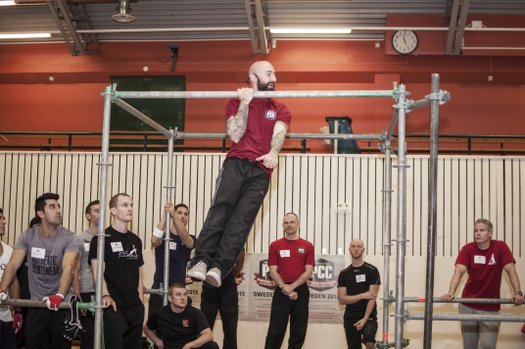
I have a confession to make; I’m obsessed with the one arm pull-up! It wasn’t always this way; three years ago I was a skinny runner, who weighed less than 60kg. In April 2012, I stumbled across a book that would change all this – Convict Conditioning by Paul Wade. After reading it, I decided then and there that in my lifetime I would perform a dead hanging one arm pull-up.
Note that this is simply the progressions I have made. The more you train calisthenics, the more you realize there are many different paths to progression, and what may work for one individual may not work for another.
At the beginning of my training, I could perform a handful of full range pull-ups, so I skipped the first few levels (sorry Coach) and went straight into full pull-ups, followed by close hand and then uneven pull-ups. It took me about 3 months to perform 2 sets of 10 strict full range pull-ups; by full range I mean a straight arm at the bottom and my chin over the bar at the top.
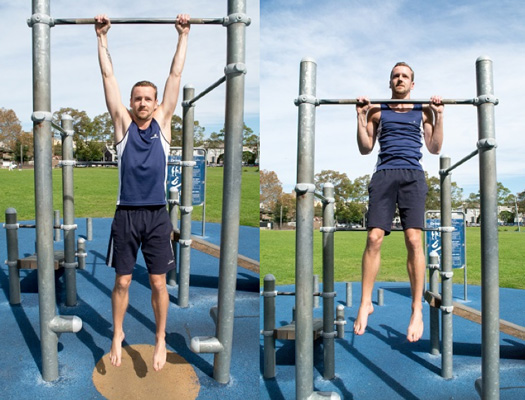

After training uneven pull-ups for a few months I hit my first road block; I could perform 2 sets of 9 uneven each arm, but any attempt at half one arm pull-ups was met with failure. Knowing what I know now I would have built in some extra progressions and gradually moved my non-working hand further down my arm.
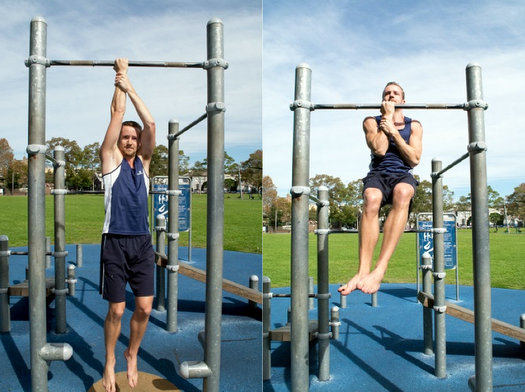
Instead of this I found an alternative progression upon the purchase of a set of rings; whereby one arm is on the top ring, with the other arm on a lower ring. This way you can easily increase the distance between arms over time. As both arms are on the rings, your head can go between them, which makes it slightly easier than with one arm on the bar.
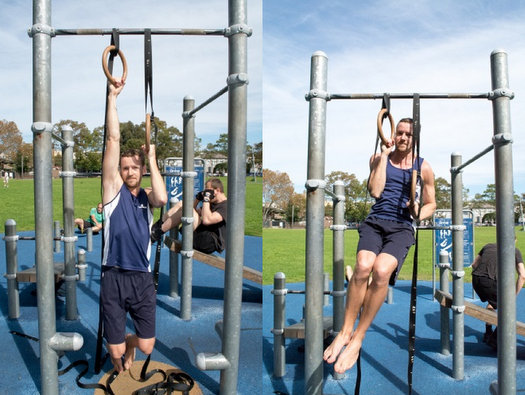
My training for this had gone on for a few months when I read a couple of articles from Coach Wade and Al Kavadlo, here on the PCC blog about training for mass and training for strength. I had been toying around with the idea of moving away from strict Convict Conditioning style progressions for a while and this proved to be the catalyst. I split my main training plan into 2 different groups of sets; the first being the hard set, consisting of 2 sets of up to 5 reps, and being the most difficult exercise you can do in the progression whilst you are fresh. After this I perform my working sets, consisting of 4 sets of 5 reps. This new plan allowed me to switch to 2 separate progressions in the same workout, which I’ve found to be extremely effective towards reaching my goal.
For my hard sets I added one-arm negatives. Simply pull yourself up to the bar with both arms, then gradually take one arm off the bar and lower yourself with as much control as possible. Starting with fewer fingers is a good way to progress to this, otherwise the most likely initial outcome will be you dropping straight down. The working sets were made up of my uneven ring pull-ups.

With uneven ring pull-ups you eventually reach a point where your lower arm is performing a pushing motion, rather than a pull in the top position. This is where it starts to become easier and means it is time to change to a new progression. In this instance I moved my pulling arm back to the bar, then used just the one ring to assist. It’s really important with this exercise that your head follows the path of your pulling arm; this means that your working arm is taking most of the weight and replicates the path you would take for a one arm pull-up. Note that this exercise could easily be performed with a towel or the post of your pull-up bar, if you do not have access to rings.
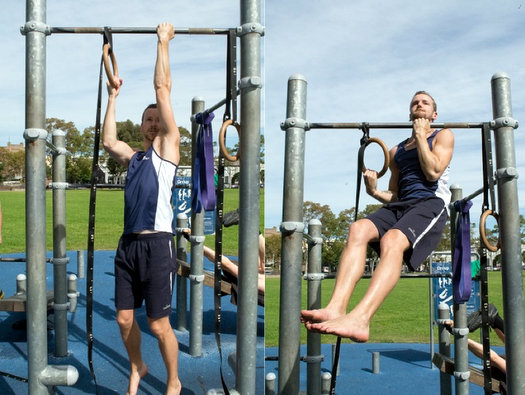
By this time I had been teaching calisthenics to some of my work mates for around a year. For those who can’t yet perform a full range pull-up, they start with negatives for their hard sets and band assisted pull-ups for their working sets. Exercise bands have some good advantages in that you don’t need anyone to help you, and you know exactly how much assistance you’re getting. They’re very easy to progress with as they have different levels of assistance. Having said that, they have a major weakness in that they assist you a lot at the bottom but not as much at the top. This has worked for a number of people to get full pull-ups though, so I was keen to see how the band would work for the one arm pull-up.
When attempting this you will find that your body naturally wants to twist. Squeeze your core and obliques tightly to help prevent this, but you may need to reset yourself every few reps. What I particularly like about this exercise is it allows me to use just one arm, with no assistance from the other. I now train this exercise in my hard sets and the assisted one arm pull-ups in the working sets.
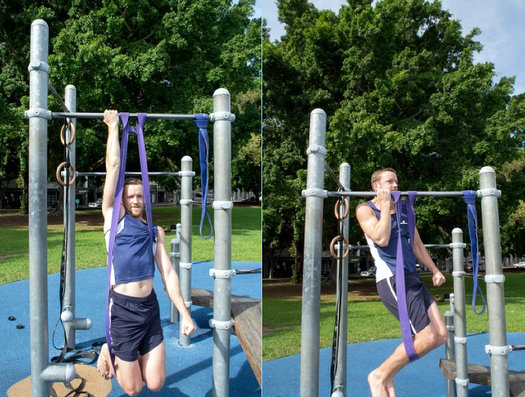
Finally, below is my latest attempt at a jump assisted one arm pull-up. As you can see my left arm is quite a lot weaker than my right, this I’m trying to resolve by only moving onto the next progression once both arms can do it, but my right arm will always be stronger.
I will achieve a dead-hanging one arm pull-up eventually, look out for a video and an update then.
***
David Mace is a full time programmer and a part time calisthenics enthusiast and loves to teach PCC to friends and co-workers. Success for him is measured in helping others (and himself) to achieve their maximum potential and doing things that you once thought were impossible. He can be contacted through his website at www.mpcalisthenics.com, where you can also read his blog, get advice on nutrition, training and life philosophy.
